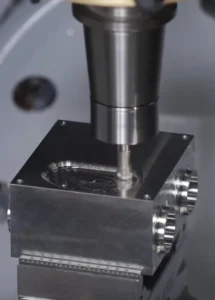Longitudinal turning is a fundamental machining operation in which the cutting tool moves parallel to the axis of rotation of the workpiece. This technique excels at shaping long, cylindrical parts, offering precision, consistency, and efficiency.
For engineers and machinists, knowing when to employ longitudinal turning is critical. The correct choice directly affects production speed, tool life, surface finish, and overall part quality. Understanding this method can significantly reduce cycle times while maintaining accuracy, making it a staple in both high-volume and precision machining operations.
Ideal Applications
Machining Long Cylindrical Components
Shafts, rods, axles, and tubular materials are commonly manufactured using longitudinal turning processes. Its parallel feed allows for uniform diameter and smooth surface finish along the entire length of long workpieces.
Likely a 2-meter steel shaft for an industrial motor requires longitudinal turning to maintain consistent diameter and concentricity while minimizing setup time. The continuous axial cut ensures material is removed efficiently without repeated repositioning. Start with a shorter test piece to calibrate feed and speed, ensuring optimal surface finish before machining full-length parts.
Creating Deep Grooves and 90° Corners
Turning along the axis is capable of creating pronounced grooves and well-defined internal edges. The axial movement of the tool allows it to access features that other turning methods may struggle to reach.
Hydraulic valve bodies often contain deep internal grooves and 90° corners. Longitudinal turning ensures accurate dimensions and consistent surface quality. Use high-pressure coolant and chip breakers when cutting deep grooves to prevent chip accumulation, which can degrade the surface finish and shorten tool life.
High-Volume Production of Symmetrical Parts
This technique is ideal for mass-producing symmetrical, rotary components. Continuous axial cutting reduces setup time and tool changes, increasing overall productivity while maintaining tight tolerances.
Automotive camshafts and crankshafts are produced in high volumes using longitudinal turning. This method ensures consistent geometry, reduces cycle time, and lowers production costs. Incorporate monitoring of tool wear and cutting forces in high-volume runs to maintain quality across batches.
Advantages
- Efficient Material Removal: Axial feed allows for rapid, continuous cutting, particularly for long components.
- Dimensional Consistency: Maintains uniform diameter and surface finish along the workpiece.
- Reduced Setup Complexity: Fewer reorientations are required, streamlining production.
- High Productivity: Continuous operation supports faster cycles, ideal for batch production.
Limitations and Considerations
While longitudinal turning offers significant advantages, several limitations require attention:
- Tool Access: Axial movement limits the tool to features along the workpiece axis, making some geometries challenging to machine.
- Chip Removal: The machining of deep recesses or extended cylindrical sections may lead to chip buildup, which can compromise surface quality and reduce tool durability.
- Tool Wear: Continuous cutting along the same axis accelerates wear, requiring inspection and replacement.
- Material Constraints: Hard or abrasive materials may necessitate specialized tooling, slower feeds, or additional cooling.
Utilize chip breakers, high-pressure coolant, and appropriate tool selection to manage chip flow, extend tool life, and maintain consistent quality.
Conclusion
Axial turning serves as a highly adaptable and productive manufacturing process, ideal for fabricating elongated cylindrical shapes, deep channels, and rotationally symmetric parts in large-scale production environments. Understanding its ideal applications, advantages, and limitations allows manufacturers to optimize cutting strategies, improve productivity, and maintain part quality.
Applied thoughtfully, longitudinal turning delivers precision, efficiency, and consistency, making it an indispensable technique in modern machining operations.




